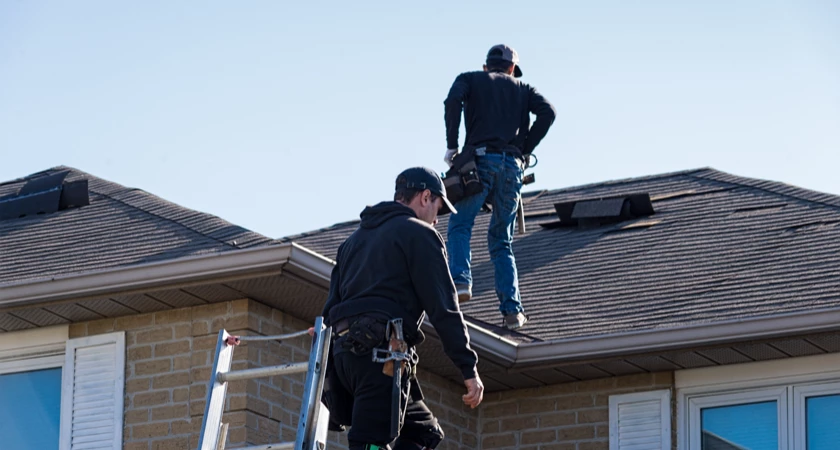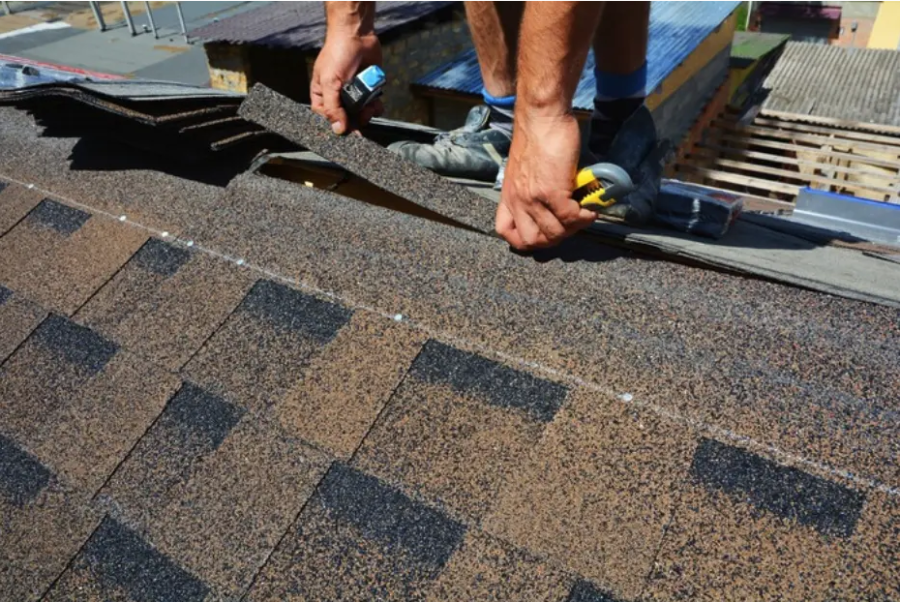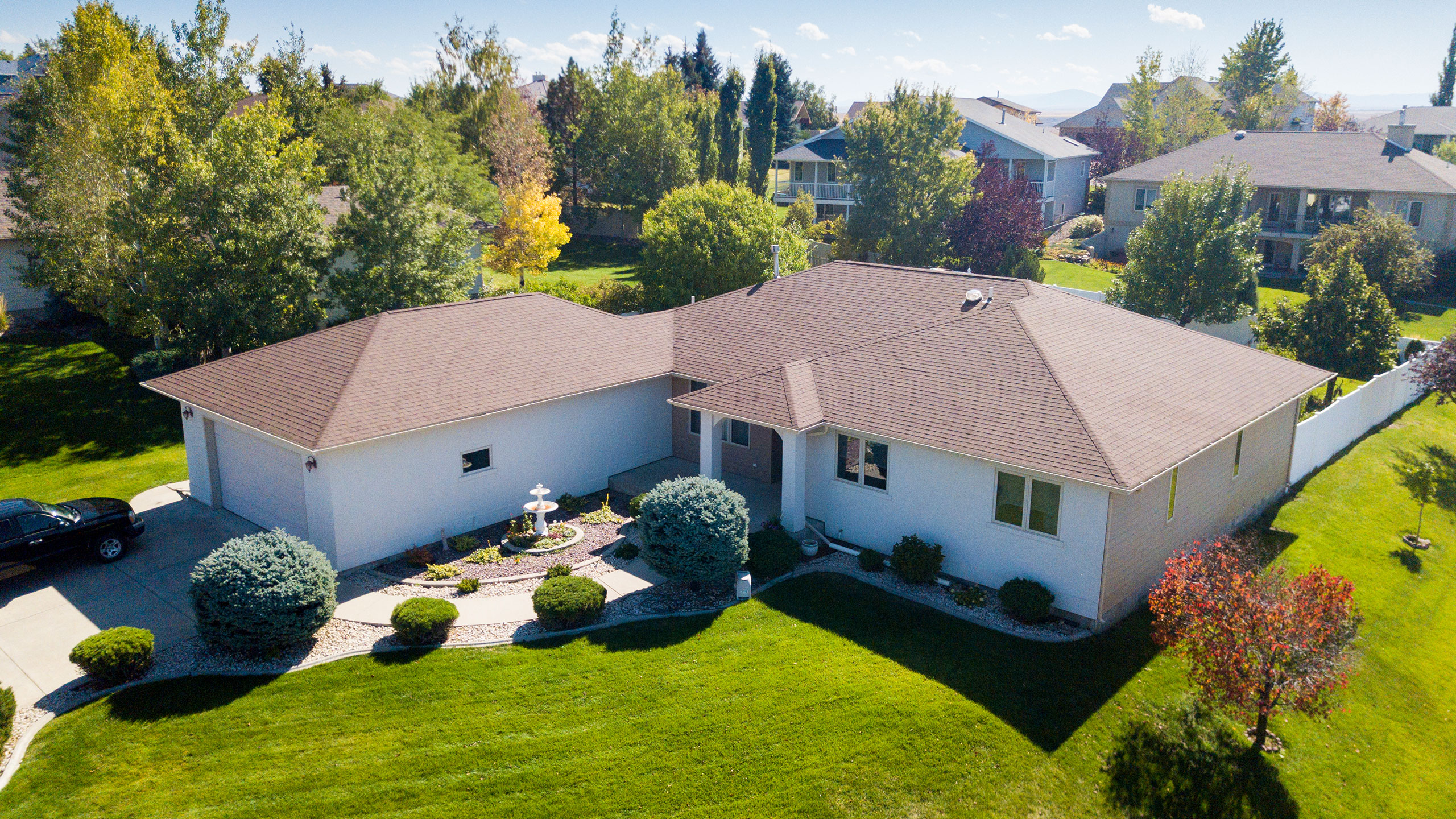Homeowners in Montana have a lot to contend with when it comes to keeping their roofs intact. Rated as the fourth windiest state in the country, Montana is also notorious for its heavy winter snows, with annual accumulations of 30 to 50 inches in the major cities. These dynamic weather patterns are tough on asphalt shingles, and most homeowners in Montana find themselves in need of a good roofing contractor every now and then.
If your roof is in need of repair, you may be eager for ways to save on costs while completing the project. Many homeowners are leery of making the expensive decision to replace their whole roof, and opt instead to add a layer of asphalt shingles on top of the existing layer. But what if your home already has two layers of shingles?
Keep reading to learn more about the permitted number of layers of shingles for roofs in Montana, as well as the costs of replacing existing layers with a new roof.
Common Causes of Damage to Shingles
Before we get into how many layers of shingles are permitted, here are some of the most common causes of damage to shingle roofs in Montana.
Snow and Other Inclement Weather
Heavy snowfalls are common during Montana winters, and all that extra weight can really put a strain on your roof. Additionally, the moisture from melting snow can seep in through faulty or damaged roofing materials, creating leaks in your attic and speeding up the wear and tear on your asphalt shingles.
Penetration by Falling Objects
One of the most common causes of damage to asphalt shingles is falling tree branches. Penetrations due to downed trees can wreak havoc on your shingles and the roof sheathing underneath. Monitor any trees around your home, and be proactive about removing dead branches that could pose a threat to your roof.
Extreme Winds
High winds are notorious for causing damage to shingles, and the more extreme gusts can even rip a shingle or three straight off of your roof. It’s not uncommon for Montana to see sustained winds of 40 and 50 miles per hour, which is more than enough to cause damage to an asphalt roof, particularly one that isn’t in the best repair.
Use of Low-Quality Roofing Materials
When building a house, a contractor will sometimes be forced to choose low-cost materials to satisfy the budget requests of the building owner. As long as the finished building is up to code, the roofing material doesn’t necessarily have to be high-quality; however, better roofing materials will lead to a sturdier and more wind-resistant roof.

Signs You Need Roof Repair or Replacement
The lifespan of a shingle roof depends on the type of shingle used, as well as the climate and average weather in the area. A roof made from normal asphalt shingles will usually last about twenty years before needing to be replaced. Check with your specific shingle manufacturer for a more exact estimate of the lifespan of your shingles.
That said, many factors like the ones listed above can speed up the aging process of your shingles. To determine whether it’s time to hire a roofer to repair or replace your shingles, look for the following signs of damage to your roof.
Cracked, Missing, or Broken Shingles
High winds, old shingles, hail, and poor installation are the four main reasons why you might see gaps in your roof shingles. Missing or cracked shingles can be dangerous because the gaps allow water to seep into your home, which can lead to chronic leaks, water damage, and mildew. You should inspect your shingles after each period of high wind to make sure none need to be replaced.
Broken or Damaged Gutters
Your gutters are very important for directing water away from your house. Most building codes require at least a quarter inch worth of slope for every ten feet of gutter. If your gutters are cracked or broken, water could gush down the outer wall of your house or collect in a pool along your foundation, potentially causing leaks in your basement or crawlspace.
Leaks or Excess Moisture in the Attic
If you have an asphalt roof, that first layer of shingles is your attic’s only line of defense. Many homeowners use their attics to store old mementoes, childhood toys, and family heirlooms, so leaks in the attic can be devastating. Keeping your roof in excellent repair is essential for maintaining a dry attic.
Rusted or Damaged Roof Flashing
Flashing is the metal trim usually found around chimneys, along open valleys, and around the edges of a shingle roof. Since flashing protects the most vulnerable areas of your roof from encroaching water, roofing professionals recommend checking your flashing for rust or damage often.
Problems with Two Layers of Asphalt Shingles
Though the up-front cost may seem much lower, there are many issues with having two layers of asphalt shingles that might have expensive consequences, both in the near future and further down the line.
Harder to Find Leaks
When your roof shingles are stacked in multiple layers, it becomes harder for roofers to find leaks, especially around the flashing and other vulnerable points. This means leaks could go undetected until they’ve caused a serious amount of damage.
Can’t Inspect Underlying Materials
With multiple layers of roof shingles, there’s no way for your roofing contractor to inspect the structure underneath your roof, including your roof decking.
Roof decking is the wooden boards that constitute the framing of your roof and support your shingles. Think of decking as the foundation for your shingles; all that extra weight from the new shingle layer can lead to damage your roofer won’t be able to see.
Decreases Your Home’s Value
Roofing is a vital part of a home’s health and overall value. A new roof, whether it’s a metal roof or a shingle roof, will add greatly to the value of your home. However, roofing repairs that include adding new layers rather than replacing the whole roof will lower the value of your home.
Added Layers of Shingles Trap More Heat
Another problem with two layers of shingles is that the second layer will trap heat, resulting in higher utility bills and speeding up the degradation of both layers of shingles. In fact, having a second layer of roof shingles can speed up the aging process of your roof by as much as 40%.
4 Things to Know About Nailing Over Your Existing Roof
If you do decide that the costs of a roof replacement are just too high, here are some things to keep in mind before you go about adding a new shingle layer.
1. Upgrading 3-tab asphalt shingles to architectural shingles creates a lumpy roof.
Many homeowners who decide to add a new layer of shingles to their roof desire to upgrade the quality of their shingles from 3-tab to architectural. Unfortunately, this upgrade results in a lumpy, unattractive roof, so in most cases your roofer will recommend sticking to the original shingles for your nail-over.
2. The roofing contractor has to use your current roof flashing system.
Your roofing professional won’t be able to upgrade your flashing, either, since the original layer of shingles overlaps the flashing. The only way to upgrade your shingles and flashing is by hiring a roofing company to strip your old shingles and install a new roof.
3. Your roofing contractor can’t inspect your roof sheathing.
With multiple layers of asphalt shingles to deal with, your roofing professional won’t be able to check out your roof sheathing (another word for decking) to see if there’s any damage from water or from the extra weight of those added shingle layers.
4. Installing additional layers of shingles adds extra weight to your roof.
This may be difficult to fathom, but the weight of a single layer of asphalt shingles is a whopping two to three tons. That’s the total weight your decking is designed to bear up. If you add a second layer, you’re doubling that weight, increasing the likelihood of damage to the underlying roofing structures.
Pros and Cons of Adding a Layer of Shingles to Your Asphalt Roof
There aren’t many benefits to adding a layer of shingles on top of the existing roof. In most cases, you’ll be better off going the distance and installing a new roof.
Pros
The only real benefit to choosing this method of repair over replacing your roof is that you’ll save money in the short term. However, depending on how many layers you already have, your roof may not be up to code, which could lead to expensive fines down the road.
Cons
As mentioned above, adding more shingles on top of the existing layer will create undue pressure on the decking and other structures supporting your roof. The extra layer will also trap heat, increasing your energy bills and speeding up the degradation of both layers.
Based on how many layers you already have, your home may not be up to code if you add another, which could result in hefty fines and safety hazards.
Pros and Cons of a Tear-Off and Roof Replacement
We’ve discussed how many layers of roof shingles your home can have and still be up to code. If at this point you’ve realized your roof has at least two layers already, it’s time to seriously consider giving your home the re-roofing it needs and deserves.
Pros
After a re-roofing with fresh shingles, most homes are good to go for about 20 years. Your heating and cooling systems will be more efficient, and your attic and other vulnerable spaces will be better protected from encroaching water.
Cons
Replacing a whole roof is an expensive project, and many homeowners are turned off by the up-front costs. However, since new roofs are very appealing to prospective buyers, your home’s value will be dramatically increased if you go ahead with the installation.

What is the Maximum Recommended Number of Layers of Asphalt Shingles?
If you’ve gone up to inspect your old shingles and noticed one or two of the types of damage listed above, you may now be wondering what your roofing options are. And if you’ve looked into what it costs to strip and replace those old shingles, you might be seriously considering installing a new layer on top of the existing layer.
But how many layers of shingles do building codes allow? How do you know whether you’re a good candidate for a second layer of shingles? At what point should you go ahead and pay the cost of a roof replacement?
Is It Permitted to Put a Second Layer of Shingles on a Roof?
In most cases, building codes allow for a second layer of shingles to be added atop the first layer. Two layers is the maximum number of layers of shingles allowed in Montana. However, your average roofing company will dissuade homeowners from choosing to add new layers of shingles over an existing roof, instead recommending a tear-off and roof replacement.
Reasons to Hire a Professional Roofer
While safety is an extremely important reason to go through a roofing company rather than attempting a re-roofing project on your own, there are a number of other important factors that make hiring professionals the smart move.
Here are the main reasons you should hire an expert when it comes to roof repair.
1. Your Roofing Contractor Will Guarantee Your Roof is Up to Code
Adhering to the building codes of your city and state is crucial to ensure your home is safe and sturdy. A highly-rated contractor is guaranteed to know how many layers of shingles are permitted, as well as how to safely remove and dispose of the old ones.
2. Roofers Know Which Materials Are Best to Use
If you’re new to the world of roofing, you may not know which manufacturer makes the most reliable shingles, or what materials and tools you’ll even need to work on your roof. Roofing contractors have a full complement of tools and safety materials, and they’ll be happy to point you toward the best 3-tab or architectural shingles to suit your needs.
3. A Professional Roofing Contractor Can Determine if Repairs to the Underlying Structure Are Needed
Once your contractor has torn up the bottom layer of shingles, they’ll be able to take a look at your flashing and decking and determine whether repairs are needed before continuing with the re-roofing project. Any rusted flashing should be replaced to avoid water seeping into your attic, along with any cracked or faulty decking boards.
4. Expert Roofers Won’t Cause Accidental Damage to Your Roof
Along with snow, wind, and falling objects, the fourth leading cause of accidental roof damage is actually from untrained people walking around on their roofs. By taking on your roof repairs yourself, you risk causing more harm than good due to not knowing where is safe to walk.
Roofing professionals have the training and poise to carry out their tasks without causing harm to your roof. For this reason, unless you’re an experienced roofer, you shouldn’t tackle roof repair work or replacements yourself.
Frequently Asked Questions
Can You Have 3 Layers of Asphalt Roof?
Legally, no. At most your house should have two layers of shingles. However, adding layers of shingles on top of the old roof used to be a very common method of repair, leading many long-term homeowners to wonder, “Why should I tear off my roof?”
Can I Save Money by Doing My Own Roof Repairs?
It is never recommended for untrained homeowners to attempt their own re-roofing and roof repairs. Roofing is an extremely dangerous job that requires a lot of skill and knowledge to perform safely. You should always hire a reputable roofing contractor to see to the needs of your roof.
How Much Does it Cost to Add One Layer Over the Old Shingles?
The price to nail new asphalt shingles over the old ones is cheaper than stripping down and re-roofing your whole house. You’re most likely looking at a $5,000 price tag for this procedure. Keep in mind that, depending on how many layers of shingles you already have, you may not be a good candidate for a nail-over and your roofing professional may even refuse the job.
How Much Does a New Roof Installation Cost?
The cost of a new roof depend on the materials used. Tearing off and installing new asphalt shingles usually costs between $8,000 and $9,000. Depending on how many layers the roofers have to remove and dispose of before installing the new roof, it may be more expensive.
The Bottom Line
While nailing new roof shingles over the old shingles may seem like a cost-effective way to repair your roof, you’re likely to find the risks and drawbacks to doing so outweigh the benefits.
Before your roofing woes come to a head, get in touch with a highly-rated roofing contractor for an estimate on what it would cost to replace your roof.
American Choice Roofing – Top Bozeman Montana roofing company specializing in residential and commercial roof repairs and replacement. Our roofing contractors are licensed and insured.

